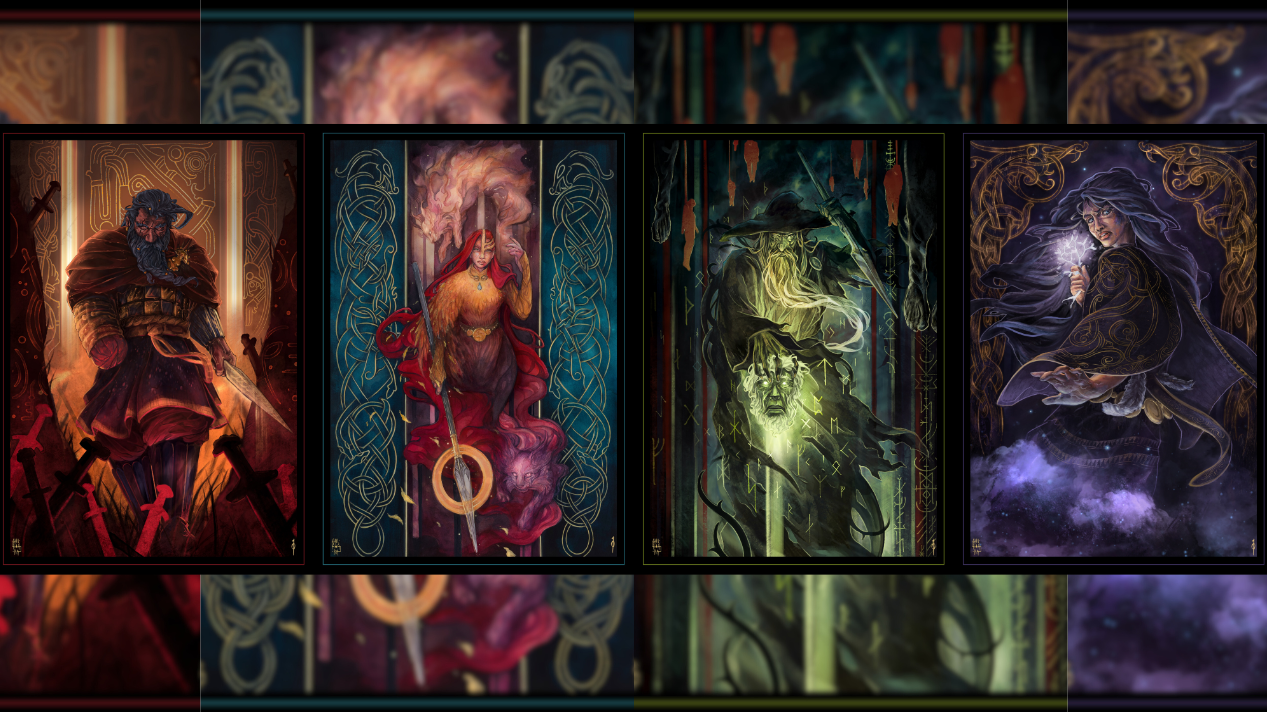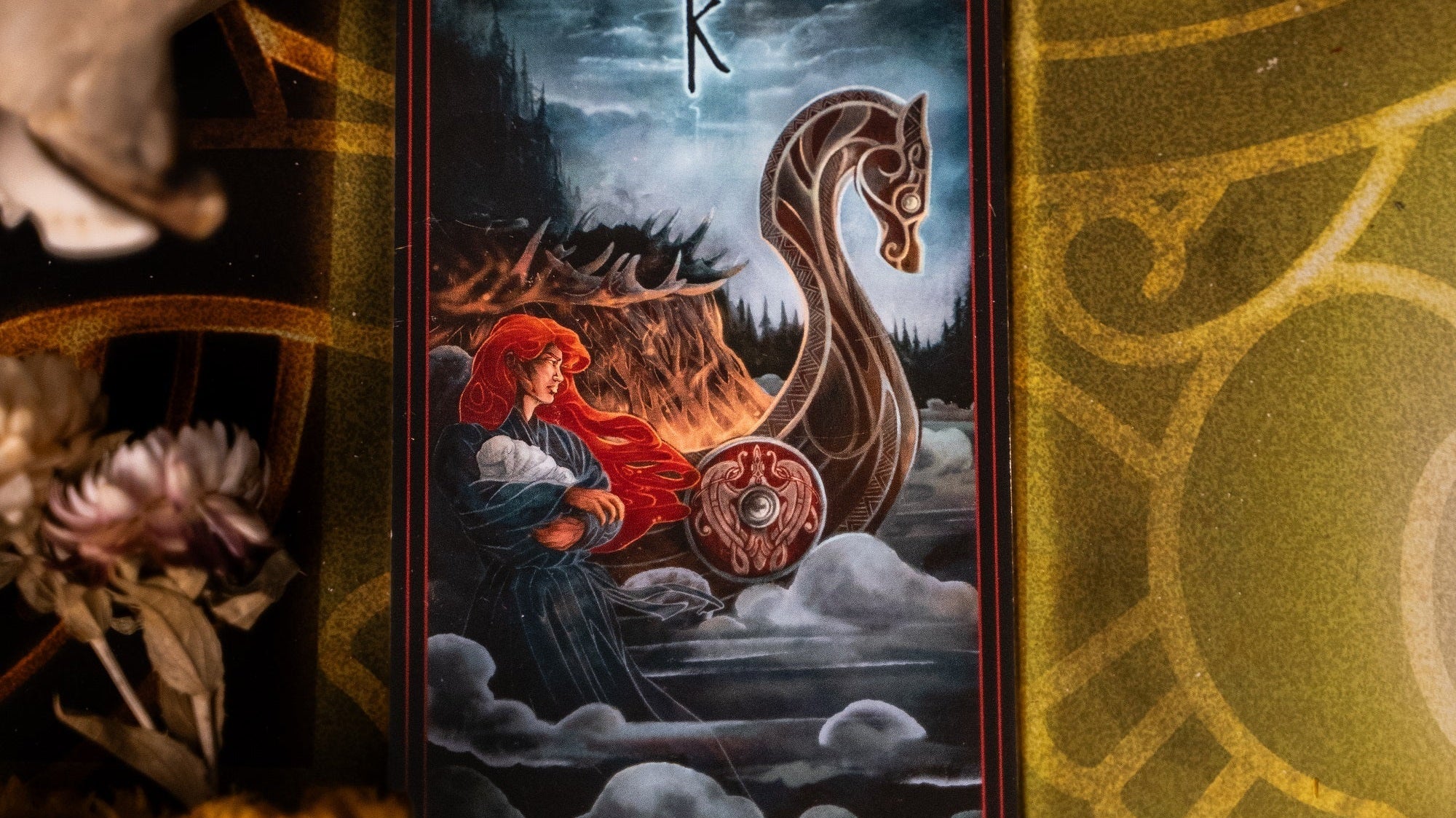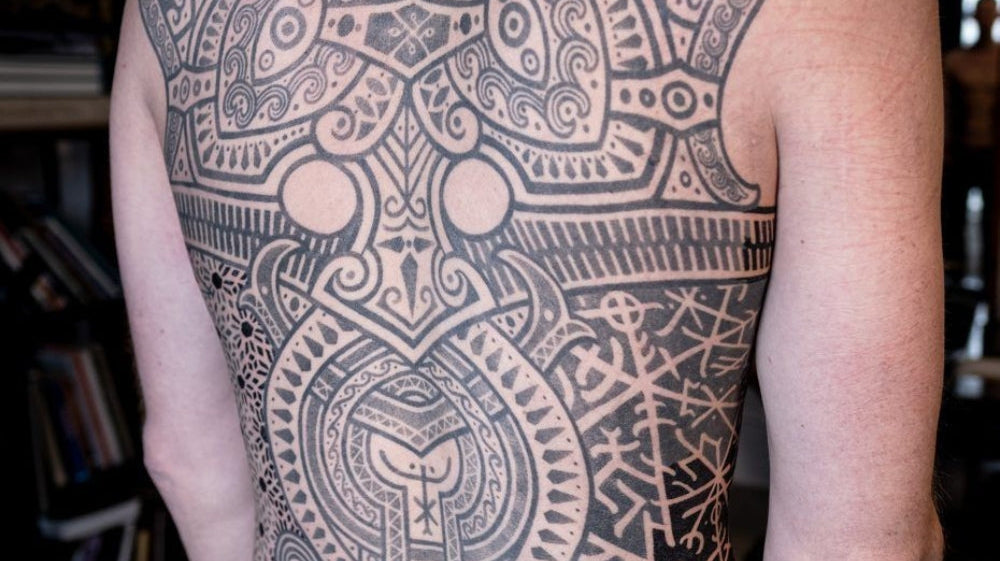This post was written by Lizzy Tiffin - find her here
So, let us share with you the story behind this popular image, depicted so many times by so many artists.
Odin is one of the best-known gods in all of Norse mythology (and likely the most worshipped), but where connotations of battle, bloodshed and victory may be the first things that come to mind when we think of him, he was also the god of wisdom, healing, poetry and sorcery. Sure, he might have delighted in a good fight (and even more so in a horn of good mead), but there was one thing Odin desired above all else – knowledge.
Once upon a time, Odin was in the throne room with his wife Frigg, receiving words and tales from his trusty ravens on the goings on in the world. His feathery friends reported stories of unrest, rumours of a coming doom, and whispers of a great battle on the horizon that the gods would surely not be able to overcome. Although Odin was the overarching god, it was Frigg that knew the fate of all, but she did not speak of it to even her husband - it was a fate she carried alone. Desperate to find a way to avoid his own end and the downfall of his kin, Odin thought hard on how he might obtain a greater understanding of the world and grow wiser for it. Willing to do whatever it took, Odin shed his usual armour and weaponry and disguised himself as a simple wanderer, donning a long grey cloak and a wide-brimmed hat to hide his true identity. Satisfied that he was sure to pass as a mere mortal, he took the rainbow bridge named Bifrost, and down through the worlds he travelled.
First, he went to Mimisbrunnr, a mystical well whose waters invoked great
wisdom. Mimir, the being that resided over the well, would drink from it every day to
top up his own mastery. Odin respectfully requested that Mimir share with him a
single drink. Mimir was willing but required something in return – one of Odin’s eyes. Without a moment’s hesitation, Odin plucked out one of his eyes and cast it into the depths of the well. Mimir granted the kingly god the elixir as promised, and as Odin drank, he felt his very mind expand as he gained much understanding, seeing all from the beginning of time to the very end.
Although certainly more knowledgeable than he ever was before, Odin knew that it
wasn’t enough. He needed to know everything - no, he had to know everything.
Next, he travelled to the trunk of Yggdrasil, a gargantuan yew tree that connected the three realms (the upperworld, the mortal plain and the underworld). At its very roots resided the three Norn, goddesses of fate that decided the length of each mortal life. The trio would inscribe their orders as runes on the roots of the great tree, and from there the threads of destiny travelled up the trunk and out into the cosmos. Odin knew that if he wanted to get what he so desired, he must understand these runes and all the secrets they held.
The Norn welcomed him (of course, they knew he was coming) and declared that they knew of his mission, but again he would have to pay a heavy price; Odin was told that he had to sacrifice himself. Odin nodded solemnly. He called out for Gungnir, his famous spear, and boldly fell onto its tip, impaling himself through the chest. Then, he turned to Yggdrasil and hung himself from its branches. He hung there for nine days and nine nights, going without any food or water, and suffering complete and total agony. On the ninth night, just when Odin thought he couldn’t possibly take any more of this torture, he looked below him and saw that the shapes of the runes, once so cryptic and distant, suddenly made sense to him now, their secrets unveiled.
He cried out in joy and promptly dropped from the tree. Not only did he now understand the runes, he suddenly knew how to heal illness, change the weather, make mortals fall in love, and so much more without even lifting a divine finger in effort. Mission accomplished, Odin was now the wisest being in all of creation.
Odin was also able to generously share a shred of his understanding with
humankind, teaching us to read runes ourselves, and the art of poetry writing. Still
now, the yew tree is a known symbol in Norse mythology, signifying the journey into the Underworld and the pursuit of knowledge.
There are many tales of Odin, all of which have been retold countless times - even the oldest versions we know would still themselves be retellings! There is a beauty to the life of tales told, and we hope you will retell it yourself.
Below are a few tattoos of Isar´s work depicting Odin, for inspiration.






